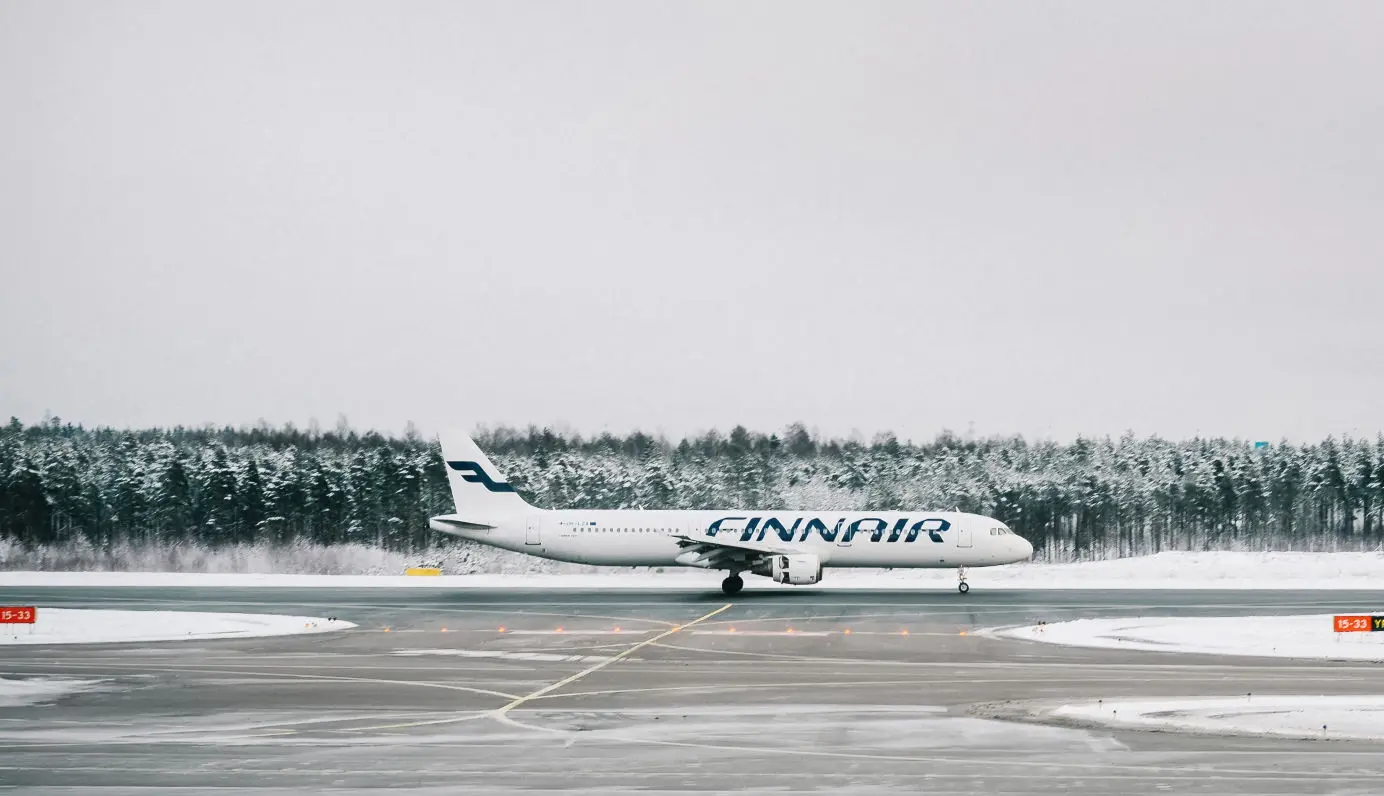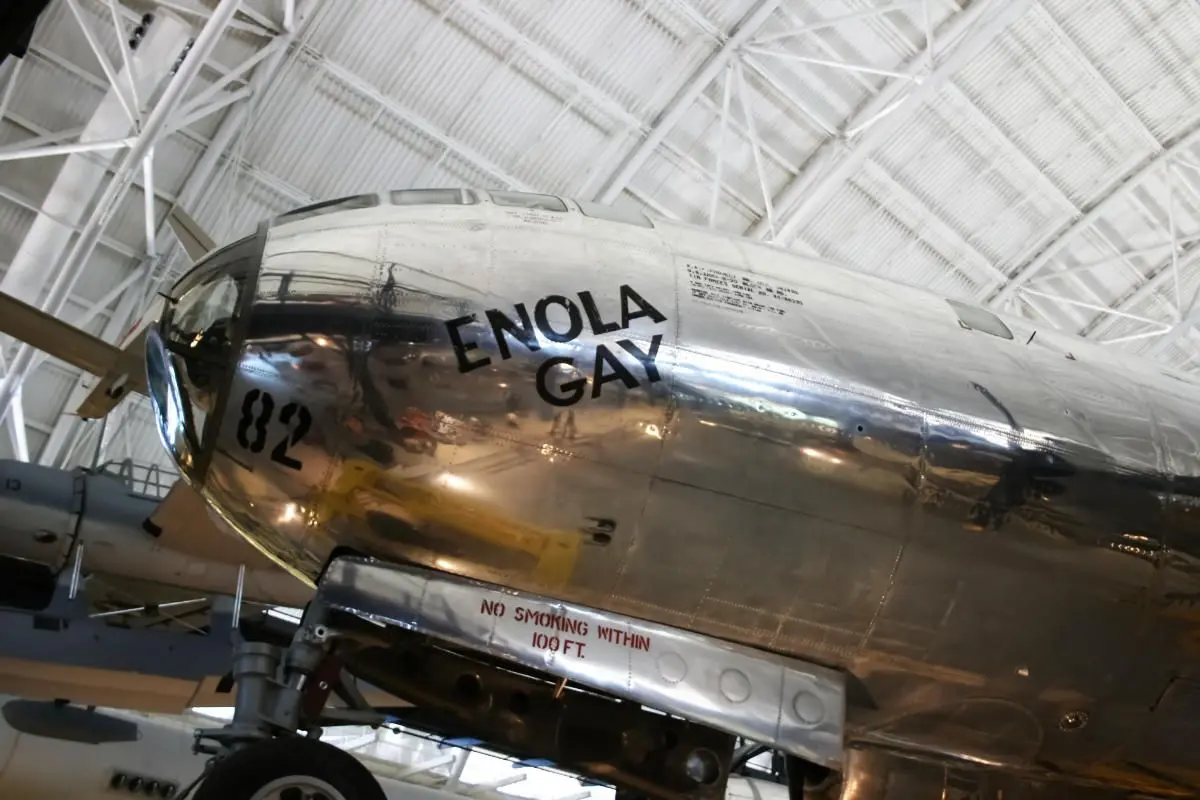
Where Is the Enola Gay Today?
Enola Gay is perhaps the most famous Boeing B-29 Superfortress. It is preserved and on public display.
Table of Contents
Out of the 3.970 Boeing B-29 bombers ever built, Enola Gay is perhaps the most well-known. For infamous reasons, though.
Not only is it one of just 26 Boeing B-29 bombers still existing, but it is also the plane that dropped the nuclear bomb over Hiroshima in 1945.
Thanks to the effort of the Smithsonian staff members, Enola Gay is on public display today. However, Enola's road to the museum was long. It stood for decades abandoned, left outside to the elements, souvenir hunters, and animals.
About the Enola Gay
Enola Gay is a Boeing B-29 Superfortress bomber aircraft manufactured in 1945.
The B-29 Superfortress was a 4-engine, propeller-driven bomber aircraft and was one of the most advanced aircraft in World War II. When the B-29 entered service in 1944, it was one of the largest aircraft in all of World War II.
Enola Gay left the assembly line on 18 May 1945 in Bellevue, Nebraska, and stayed in service until its retirement on 24 July 1946. It is one of only 65 B-29s built under the "Silverplate" specifications, making them capable of carrying nuclear weapons.
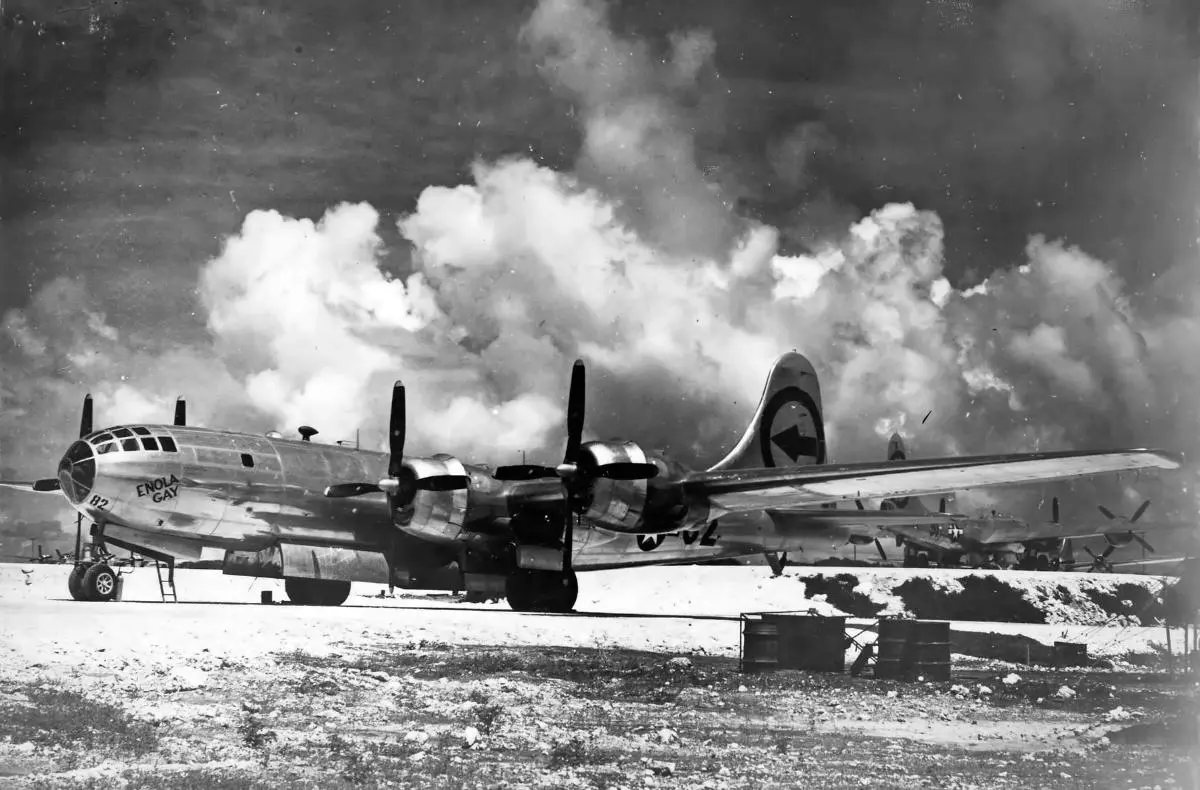
Enola Gay became the first aircraft to drop a nuclear bomb in warfare despite its short service life. On 6 August 1945, Enola Gay dropped the nuclear bomb Little Boy over Hiroshima. Pilot Paul W. Tibbets flew the plane on the mission. He had named the bomber after his mother, Enola Gay Tibbets.
The explosion destroyed about 75% of the city, killing tens of thousands. With the nuclear bomb over Nagasaki three days later, the attacks ultimately ended World War 2.
The Bombing of Hiroshima
While still on the assembly line, Enola Gay, pilot Paul W. Tibbets personally chose the airplane for his command. When delivered to the USAF on 18 May 1945, they assigned it to 393d Bombardment Squadron.
In July 1945, Enola Gay flew eight training flights and two missions to drop conventional bombs over Kobe and Nagoya.
On 5 August, Tibett assumed command of the B-29 and named it after his mother. Enola Gay took off from the Northern Mariana Islands on 6 August, piloted by Tibbet.
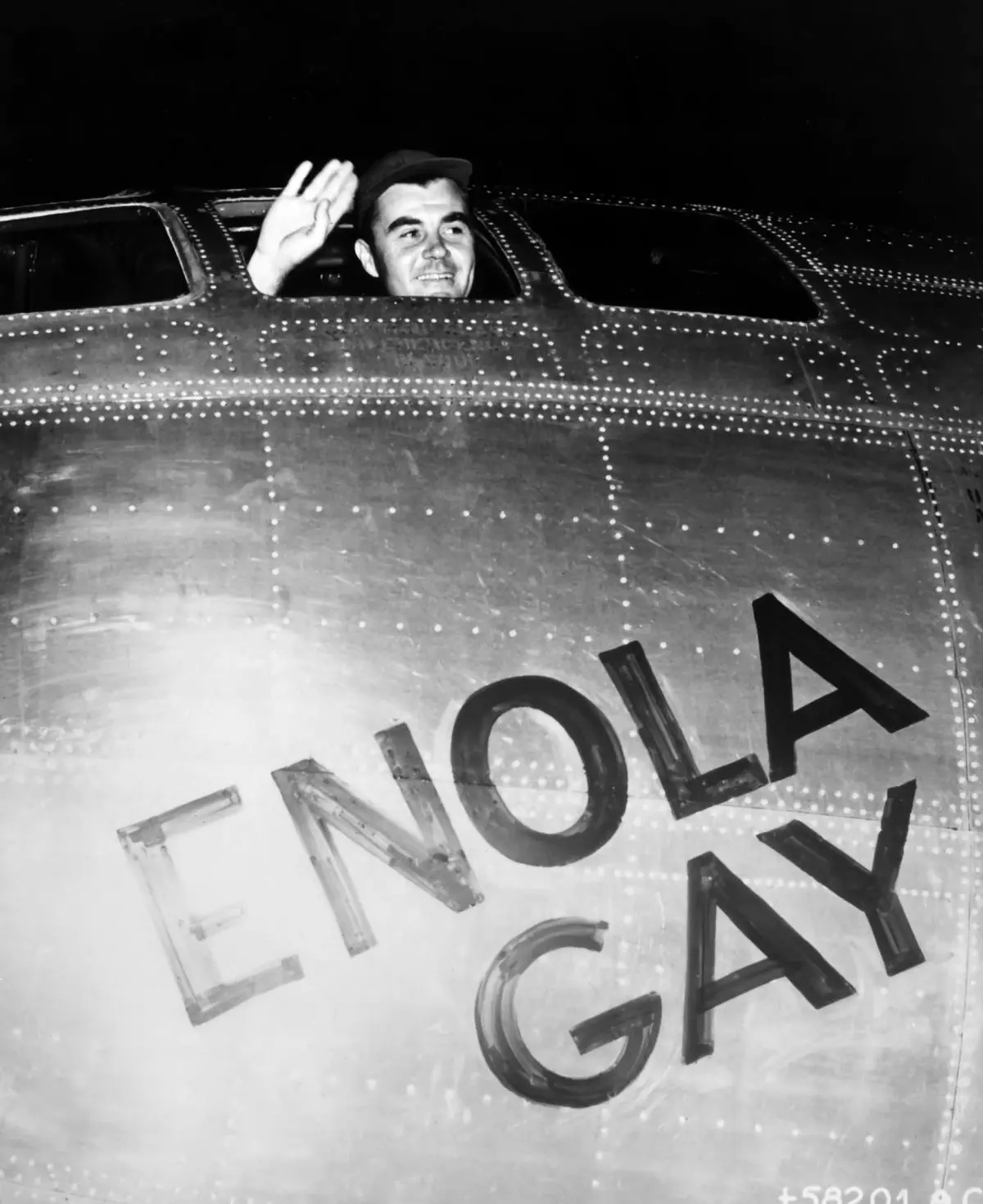
Two other B-29s escorted Enola Gay on the mission and provided measuring and photography equipment. The flight to Japan took about 6 hours, and Enola Gay arrived over Hiroshima in clear weather at 32.333 feet (9.855 meters). As planned, Enola Gay released the "Little Boy" bomb at 8:15 am local time.
Little Boy took 53 seconds to reach detonation height 600 meters above the city. The detonation was equivalent to 16 kilotons of TNT. The U.S. estimated that the blast destroyed 4.7 square miles (12 km2) of the city. According to Japanese estimates, the bomb destroyed 69% of all buildings in Hiroshima. 70.000 to 80.000 people, 30% of the city's population, were killed.
Enola Gay returned safely to the Northern Mariana Islands to great applause 12 hours after takeoff.
After the war, Enola Gay was a candidate for the nuclear test program at the Bikini Atolls but was ultimately not selected. Enola Gay did not serve again and retired in 1946.
Where is Enola Gay Today?
Since 2003, the Enola Gay has been on public display at the National Air and Space Museum in Washington, DC.
In 1946 the Air Force decided to preserve Enola Gay. The bomber changed location multiple times between 1946 and 1961 but mainly stayed at Air Force bases. The Air Force gave the aircraft to the Smithsonian Institution, but they lacked storage.
Enola Gay was left outdoors during its storage as the Air Force had no hangar space available. The aircraft's condition became a concern for the Smithsonian. Exposed to elements and plagued by souvenir hunters, insects, and birds, the aircraft's condition deteriorated over the years.
Therefore, Smithsonian staff began taking the airplane apart on 10 August 1960. They shipped the components to Smithsonian storage in Maryland. Enola Gay remained there for many more years.
In the early 1980s, two veterans, Don Rehl and Frank B. Stewart began lobbying for the restoration of Enola Gay. Tibbet, the aircraft's former pilot, even joined the campaign. The plane's restoration became a priority in 1983 when the museum got a new director, a former Air Force pilot.
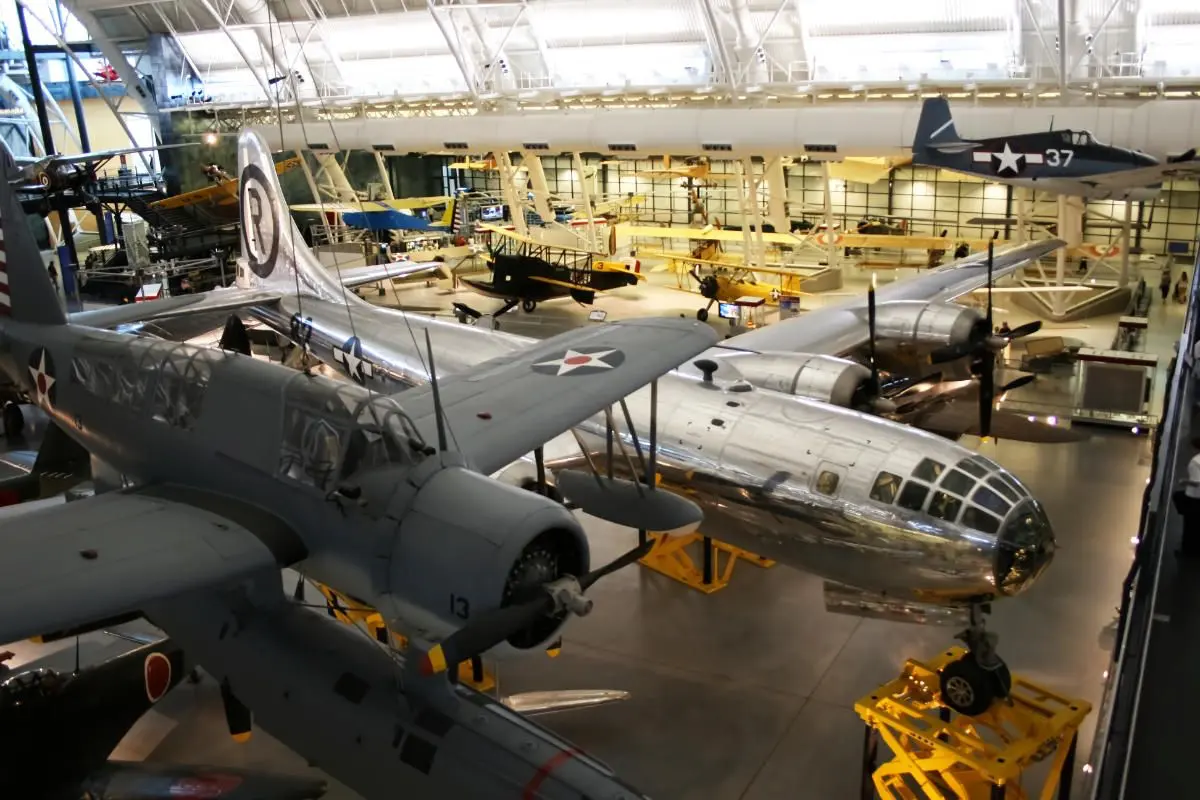
Restoration began on 5 December 1984 in Maryland. Smithsonian staff rebuilt the engines, replaced instruments and parts, and the plane slowly began to retake shape. The work would eventually require 300.000 staff hours of work.
The staff shipped Enola Gay in pieces to the National Air and Space Museum in 2003. Here, workers joined the wings and the fuselage together for the first time since 1960. They finished assembling the plane on 8 August 2003.
The National Air and Space Museum has displayed the famous Boeing B-29 Superfortress ever since.
Conclusion
Enola Gay is a Boeing B-29 Superfortress, the most advanced airplane in World War 2. The bomber airplane became the first to drop a nuclear weapon in warfare when the United States bombed Hiroshima on 6 August 1945.
After World War 2, Enola Gay was left outside for decades, exposed to weather, souvenir hunters, and animals. In 1960, Smithsonian staff took the bomber apart for preservation. However, they left the airplane in storage until the 1980s where restoration began.
It took 300.000 staff hours of work to restore Enola Gay completely. The staff completed the restoration in 2003 and put Enola Gay on display at the National Air and Space Museum in Washington, DC, where you can see it today.
Planenerd Newsletter
Join the newsletter to receive the latest updates in your inbox.


